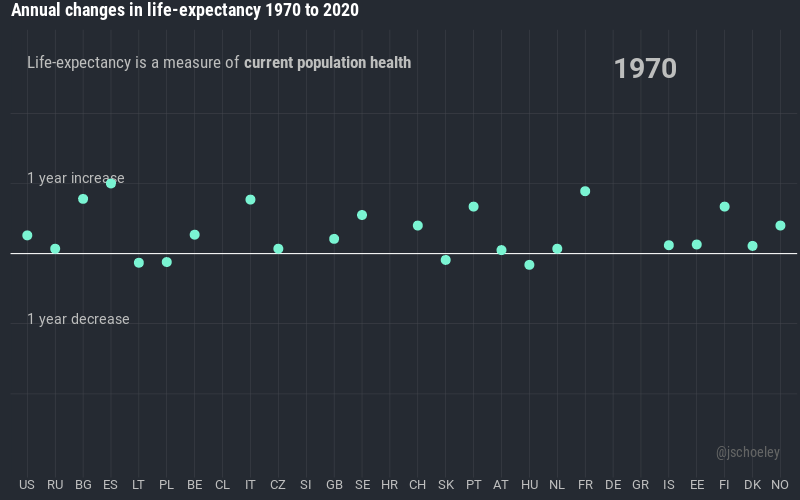
COVID-19 has led to great life expectancy losses
The COVID-19 pandemic triggered life expectancy losses in most of the world - not seen since World War II. Denmark and Norway on the contrary experienced increase in life expectancy during the pandemic.
COVID-19 took a toll on human lives last year, but with different intensity across countries. Denmark is one of the few countries where mortality levels were very little affected and life expectancy did not decrease.
Data from most of the 29 countries – spanning most of Europe, the US and Chile – that were analysed by scientists at University of Southern Denmark and University of Oxford recorded reductions in life expectancy last year - and at a scale that has wiped out years of progress. The biggest declines in life expectancy were among males in the US, with a decline of 2.2 years relative to 2019 levels, followed by Lithuanian males (1.7 years).
Good to know about life expectancy
Life expectancy, also known as period life expectancy, is a snapshot of current mortality conditions. It refers to the average age to which a newborn live if current death rates continued for their whole life. It does not predict an actual lifespan. It allows for a comparison of the size of the mortality impacts of the pandemic between different countries and populations.
Life expectancy increase wiped out
José Manuel Aburto, a co-lead author of the study and researcher at the University of Southern Denmark says:
- For Western European countries such as Spain, England and Wales, Italy, Belgium, among others, the last time such large magnitudes of declines in life expectancy at birth were observed in a single year was during the Second World War.
The scale of the life expectancy losses was stark across most countries studied, Aburto emphazises:
- 22 countries included in our study experienced larger losses than half a year in 2020. Females in eight countries and males in 11 countries experienced losses larger than a year. To contextualize, it took on average of 5.6 years for these countries to achieve a one-year increase in life expectancy recently: progress wiped out over the course of 2020 by COVID-19.
Larger declines among men
Males saw larger life expectancy declines than females. In the US, increases in mortality in the under 60 age group contributed most significantly to life expectancy declines, whereas across most of Europe increases in mortality above age 60 contributed more significantly.
Denmark and Norway were the only two countries in the study, that have recorded increase in life expectancy for both males and females in 2020, despite the COVID-19 pandemics (Figure 1). This does not mean that lives were not lost due to COVID-19 in these Nordic countries.
But the losses were relatively low and moreover, the increase in mortality due to COVID-19 was offset by mortality reductions among other causes. Early non-pharmaceutical interventions coupled with a strong health care system may help to explain why these two countries managed to avoid drops in life expectancy.

Meet the researcher
José Manuel Aburto is an assistant professor at The Interdisciplinary Centre on Population Dynamics (CPop). His research areas are demography, life span and life expectancy trends.
Fact box on the study
The research study was published in the International Journal of Epidemiology and is a result of collaboration between the researchers of the Interdisciplinary Centre on Population Dynamics (CPop) at the University of Southern Denmark and the Leverhulme Centre for Demographic Science (LCDS) at the University of Oxford. The study is published with support from The ROCKWOOL Foundation.